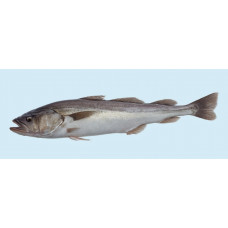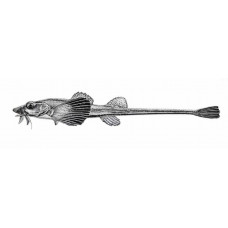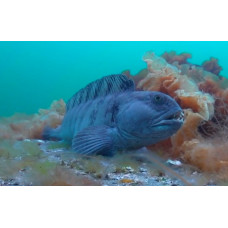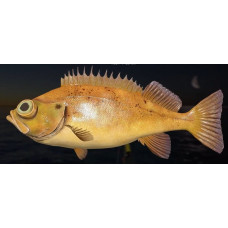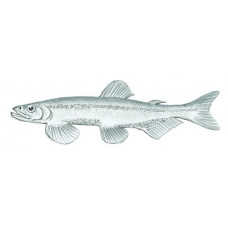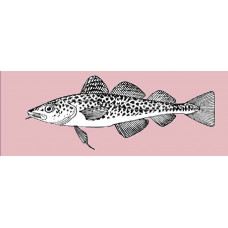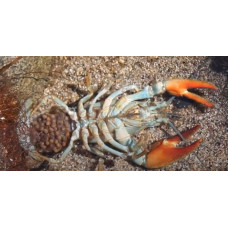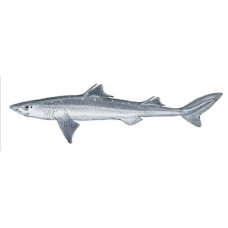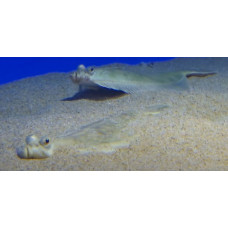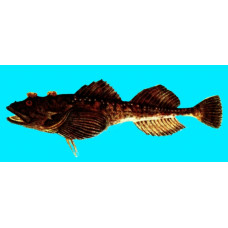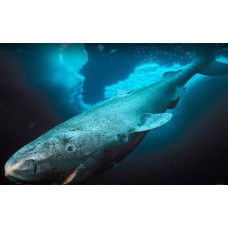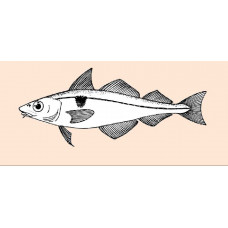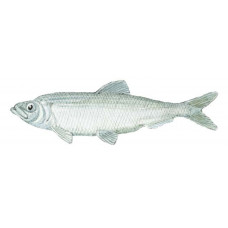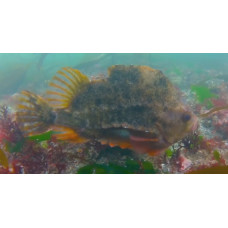Fauna of the White Sea
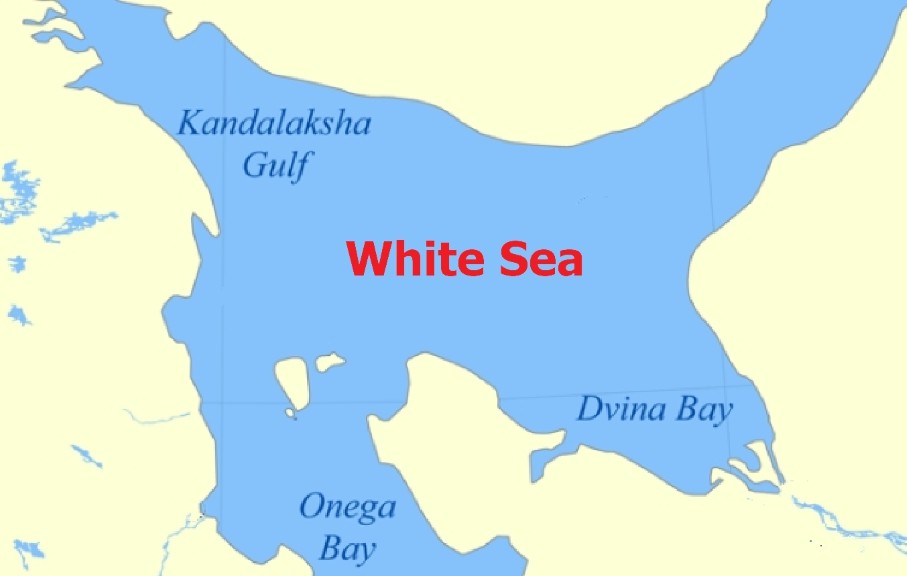 Inland sea in the north of the European part of Russia, belongs to the Arctic Ocean. The White Sea is the only inland sea in Russia. It has an area of 90 thousand km² (including numerous small islands) and a volume of only 4400 km³. Its maximum length is 600 km. The maximum depth of the sea is 343 meters, the average depth is 67 meters. The temperature of the surface water layer of the sea varies greatly depending on the season in different parts of the sea. In summer, the surface water of the bays and the central part of the sea warms up to 15-17 °C, while in Onega Bay and the Throat - not higher than 9 °C. In winter, the surface water temperature in the central and northern parts of the sea decreases to -1.3 - -1.7 °C, and in the bays - to -0.5 - -0.7 °C. Deep water layers (below the depth of 50 meters) have a constant temperature regardless of the season from -1.0 °C to +1.5 °C. The salinity of the seawater is related to the hydrological regime. The large inflow of river water and insignificant exchange with the Barents Sea have resulted in relatively low salinity of the surface waters (26 ppm and below). The salinity of the deep waters is much higher - up to 31 ppm. A counterclockwise circular current is observed in the center of the sea.
Inland sea in the north of the European part of Russia, belongs to the Arctic Ocean. The White Sea is the only inland sea in Russia. It has an area of 90 thousand km² (including numerous small islands) and a volume of only 4400 km³. Its maximum length is 600 km. The maximum depth of the sea is 343 meters, the average depth is 67 meters. The temperature of the surface water layer of the sea varies greatly depending on the season in different parts of the sea. In summer, the surface water of the bays and the central part of the sea warms up to 15-17 °C, while in Onega Bay and the Throat - not higher than 9 °C. In winter, the surface water temperature in the central and northern parts of the sea decreases to -1.3 - -1.7 °C, and in the bays - to -0.5 - -0.7 °C. Deep water layers (below the depth of 50 meters) have a constant temperature regardless of the season from -1.0 °C to +1.5 °C. The salinity of the seawater is related to the hydrological regime. The large inflow of river water and insignificant exchange with the Barents Sea have resulted in relatively low salinity of the surface waters (26 ppm and below). The salinity of the deep waters is much higher - up to 31 ppm. A counterclockwise circular current is observed in the center of the sea.
Common Inhabitants of the White Sea
The sea is home to more than 700 species of invertebrates, about 70 species of fish, and several species of marine mammals. Animals and plants live here that are adapted to sudden changes in conditions, able to withstand desiccation, changes in temperature and salinity, and strong sunlight. Bivalves have settled here in the sand. Among the representatives of coelenterates we can note various species of jellyfish, beadlet anemones, plumose anemones. Sponges, ascidians, starfish and brittle stars live on the surface of the rocks. Among the brown algae Fucus, many sea snails and colonies of bryozoans can be found. Many microorganisms live here that recycle organic matter that comes from the land with rivers and rainfall runoff. Bristle worms, balanus and mussels help to settle detrital suspensions. Numerous sea urchins and crustaceans also prefer these places. Various species of marine worms are abundant in the coastal zone. Although the sea is mainly located above the polar circle, it is not inferior to the tropical ones in terms of the diversity of its fauna.
White Sea fish
There are about 70 species of fish in the sea area, of which 56 are marine and the rest are passable or semi-passable species. The fishery is relatively small and focuses mainly on Atlantic herring, saffron cod, European smelt, Atlantic cod and Atlantic salmon. Due to the harsh weather, it is difficult to catch fish with a rod in these waters, so they are mainly caught from fishing vessels. The fish world of the White Sea is rarer than that of its northern neighbor - the Barents Sea. Such fish as navaga, Atlantic wolffish, haddock, lesser sandeel, capelin, Arctic cod, pink salmon, Arctic alligatorfish, Atlantic poachers have found a home here. The most abundant fish in the White Sea is the three-spined stickleback. In the coastal zone one can meet viviparous eelpout, rock gunnel, fourhorn sculpin, lumpsucker, beaked redfish. White sea herring, European plaice, brown trout, Atlantic mackerel are the main trophies that fishermen can get here.
Mammals of the White Sea
The friendly beluga whale is often seen here. Common мinke whales are sometimes seen in the pelagic part of the sea from June to September. Larger whales such as the bowhead and humpback whales are rare visitors to the waters. Orca and minke whales occasionally enter the central part. Rare visitors such as the northern bottlenose whale have appeared more than once. Harbor porpoises and one of the so-called "polar dolphins", which is probably a white-beaked dolphin, can sometimes be seen far from the shore. Sometimes walruses come here. Bearded and ringed seals often swim quite close to people, hoping to eat the remains of fish. Sperm whales, fin whales and sei whales have also been found dead here.
Dangerous Inhabitants of the White Sea
The most dangerous inhabitant of this sea is considered to be the lion's mane jellyfish. Large specimens of these jellyfish are dangerous to humans, their stinging cells cause severe burns. Fortunately, in the White Sea these giants are not found near the coast, so you can swim in it without risking your life. But on the surface of the sea you can meet 2 kinds of sharks. The spiny dogfish is a small shark whose average length does not exceed 1 meter. Between its fins it has spikes with which it defends itself. The Greenland shark, which swims in these waters, can grow up to 6 meters long and looks very threatening. Both sharks are virtually harmless to humans. They will only attack if there is a clear danger.
Arctic alligatorfish
Latin nameAspidophoroides olrikiiOther nameAspidophoroides olrikiiIdentificationThe head of the Arct..
Arctic cod
Latin nameArctogadus glacialisOther namePolar codIdentificationArctic cod are characterized by a thi..
Atlantic poacher
Latin nameLeptagonus decagonusOther nameLeptagonus decagonusIdentificationThis species is the only k..
Atlantic wolffish
Latin nameAnarhichas lupusOther nameSeawolf, Atlantic catfish, ocean catfish, devil fish, wolf ee, w..
Beaked redfish
Latin nameSebastes mentellaOther namesDeepwater redfin, ocean perch, Atlantic redfish, Norway haddoc..
Capelin
Latin name Mallotus villosus Other names Danish/Dutch/German/ Norwegian: lodde; French: capelin a..
Cod, Atlantic
Latin name Gadus morhua Other names Cod, codfish, codling, scrod; French: morue de l’Atlantique; ..
Crustaceans
Crustacea is a class of invertebrates of the Arthropoda type. It includes animals with body length f..
Dogfish, Spiny
Latin name Squalus acanthias Other names Dogfish, dog shark, grayfish, Pacific grayfish, Pacific ..
European plaice
Latin namePleuronectes platessaOther namesPlaiceIdentificationThe adult body shape is oval, with the..
Fourhorn sculpin
Latin nameMyoxocephalus quadricornisOther nameMyoxocephalus quadricornisIdentificationThe fourhorn s..
Greenland Shark
Latin nameSomniosus microcephalusOther namesGurry shark, grey shark, Somniosus microcephalusIdentifi..
Haddock
Latin name Melanogrammus aeglefinus Other names Haddie, scrod; French: eglefin; Italian: asinello..
Herring, Atlantic
Latin name Clupea harengus Other names Herring; Danish: Atlantisk sild, sild; Finnish: silakka, s..
Lumpsucker
Latin nameCyclopterus lumpusOther nameLumpfish, Hen-fish, Kiark-varrey. IdentificationThe body ..


